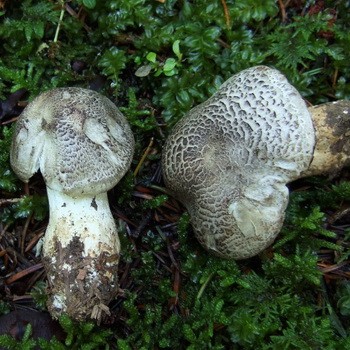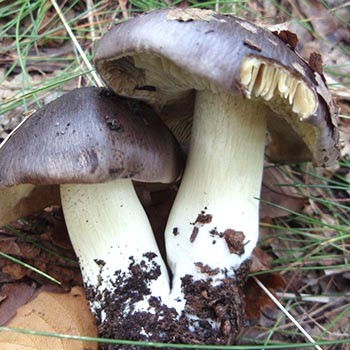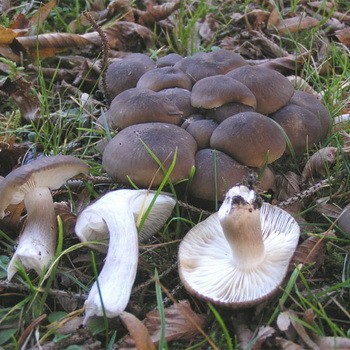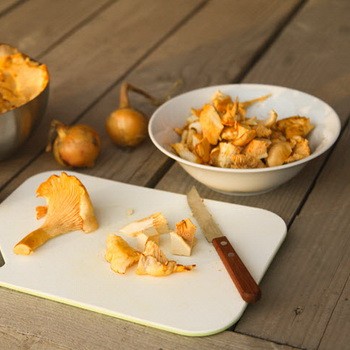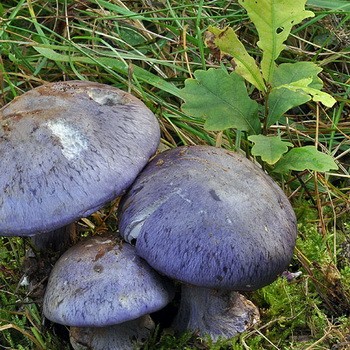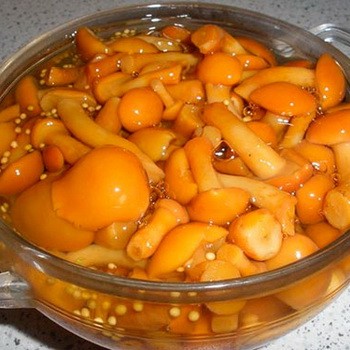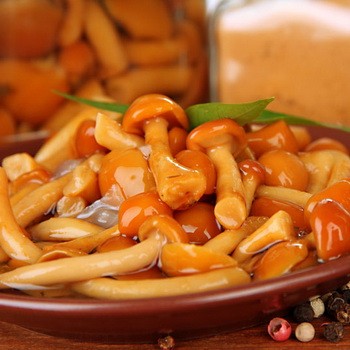How to clean gray and poplar rows
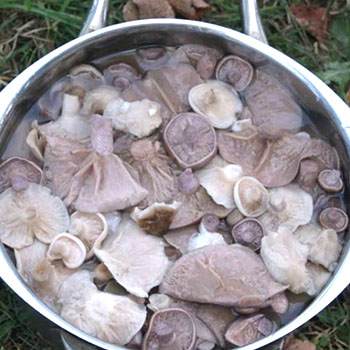
But to bring home a mushroom crop is only half the battle, because it is still necessary to carry out the initial treatment. How to clean row mushrooms before cooking various dishes and preparations? First of all, it should be said that this is not easy and painstaking work, but the result will not be long in coming.
Content
Is it necessary to clean the rowers and how to do it in a dry way?
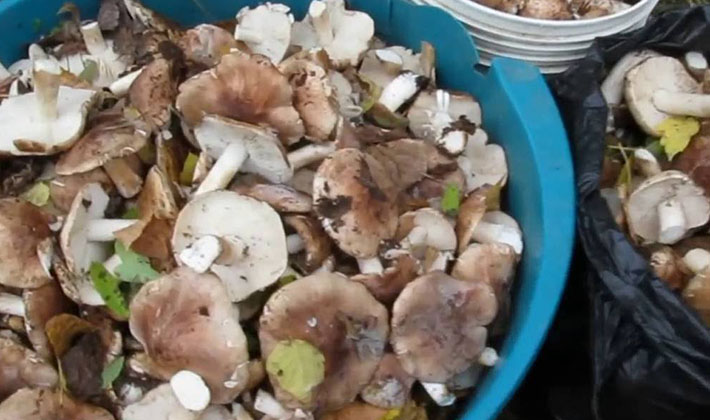 Some housewives may wonder if it is necessary to peel row mushrooms at all. So, this is a very important process, because the quality of the final product will depend on it. In addition, all types of rows grow on the soil, preferring to settle on fallen leaves and needles, as well as on moss. Thus, pollution will be present necessarily, which means that cleaning will be necessary. The following methods will show you how to clean row mushrooms.
Some housewives may wonder if it is necessary to peel row mushrooms at all. So, this is a very important process, because the quality of the final product will depend on it. In addition, all types of rows grow on the soil, preferring to settle on fallen leaves and needles, as well as on moss. Thus, pollution will be present necessarily, which means that cleaning will be necessary. The following methods will show you how to clean row mushrooms.
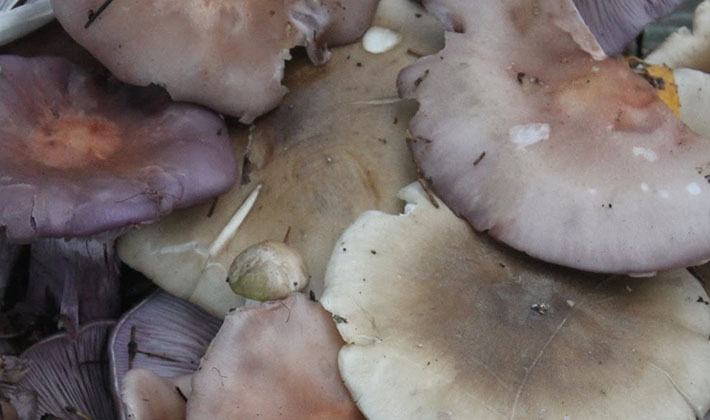 Sometimes a lot of garbage is collected on the fruit body, then you can use the dry method. Some housewives prefer to freeze or dry the row, so in this case their contact with water should be minimized. It is better to turn to dry cleaning here. So that the taste of the cooked goodies does not upset the consumer, you need to take into account all the features of the preparatory stage. So, how to clean the row mushrooms in a dry way?
Sometimes a lot of garbage is collected on the fruit body, then you can use the dry method. Some housewives prefer to freeze or dry the row, so in this case their contact with water should be minimized. It is better to turn to dry cleaning here. So that the taste of the cooked goodies does not upset the consumer, you need to take into account all the features of the preparatory stage. So, how to clean the row mushrooms in a dry way?
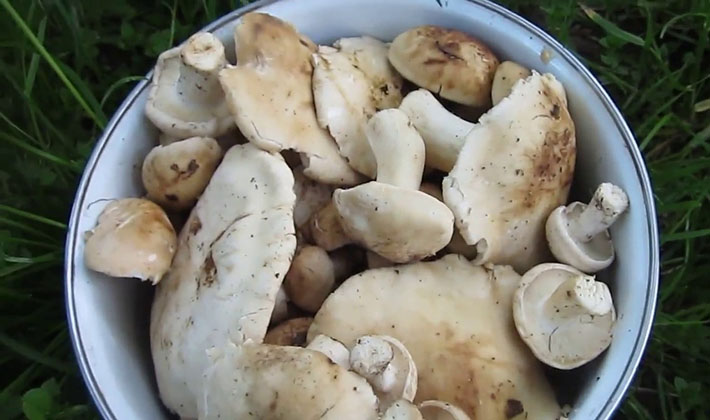 To do this, we need to take a regular kitchen knife, which will be convenient to hold in your hand, a kitchen sponge or a toothbrush, as well as vegetable oil. With a knife, we remove more and more dirt on the fruiting body, and also pay attention to the damaged areas. Such places need to be carefully cut, capturing the "healthy" part of the mushroom.
To do this, we need to take a regular kitchen knife, which will be convenient to hold in your hand, a kitchen sponge or a toothbrush, as well as vegetable oil. With a knife, we remove more and more dirt on the fruiting body, and also pay attention to the damaged areas. Such places need to be carefully cut, capturing the "healthy" part of the mushroom.
Remember that the fruiting body is allowed for further use only if the lesion area is not more than 20% of the total area of the fungus.
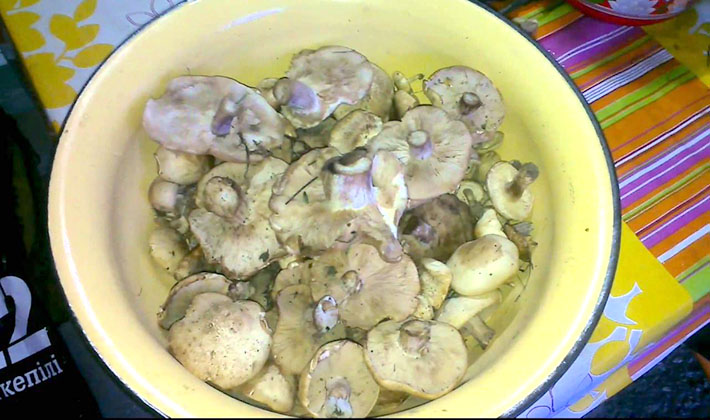 In addition, you need to cut the bottom of the legs, because it is usually very stiff. Sometimes you can notice that the hat is spoiled, but the leg is not, and vice versa. In this case, only the damaged part of the fruiting body is removed, and the strong and whole remains for further processing processes. In addition, do not forget to look under the hat, because a lot of microscopic debris is collected in the plates.
In addition, you need to cut the bottom of the legs, because it is usually very stiff. Sometimes you can notice that the hat is spoiled, but the leg is not, and vice versa. In this case, only the damaged part of the fruiting body is removed, and the strong and whole remains for further processing processes. In addition, do not forget to look under the hat, because a lot of microscopic debris is collected in the plates.
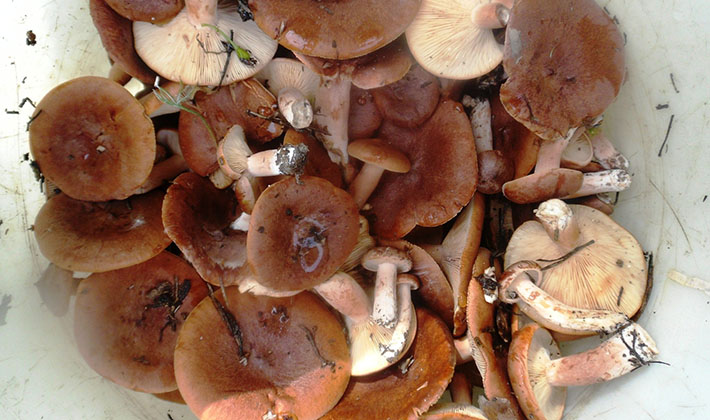 How to clean the rows further using the mentioned equipment? We remove the knife to the side, and in the meantime, wet the kitchen sponge or toothbrush in vegetable oil and wipe the surface of the mushroom. We pay special attention to areas with the remains of adhering leaves, needles and other forest debris.If necessary, then lightly wash the mushrooms under the tap, and then proceed to further processing: boiling (required), freezing, pickling, etc.
How to clean the rows further using the mentioned equipment? We remove the knife to the side, and in the meantime, wet the kitchen sponge or toothbrush in vegetable oil and wipe the surface of the mushroom. We pay special attention to areas with the remains of adhering leaves, needles and other forest debris.If necessary, then lightly wash the mushrooms under the tap, and then proceed to further processing: boiling (required), freezing, pickling, etc.
How to clean rowers: simple recipes for soaking and boiling
 Do I need to clean the rows before the soaking process? I must say that soaking is one of the main methods of cleaning. It is necessary to remove the bottom of the leg with a knife, as well as damaged and heavily soiled areas. Then you should immerse the mushroom crop in salted water (1 tbsp of salt is taken per 1 liter of water). Salt will allow the fungal pores to open, and all the garbage will come out of them. In addition, soaking will help in the best way to remove bitterness from fruiting bodies. Leave the mushrooms for 1-3 days, but do not forget to change the water several times, this will prevent the product from souring. Soaking is considered one of the simplest recipes showing how to clean rowers.
Do I need to clean the rows before the soaking process? I must say that soaking is one of the main methods of cleaning. It is necessary to remove the bottom of the leg with a knife, as well as damaged and heavily soiled areas. Then you should immerse the mushroom crop in salted water (1 tbsp of salt is taken per 1 liter of water). Salt will allow the fungal pores to open, and all the garbage will come out of them. In addition, soaking will help in the best way to remove bitterness from fruiting bodies. Leave the mushrooms for 1-3 days, but do not forget to change the water several times, this will prevent the product from souring. Soaking is considered one of the simplest recipes showing how to clean rowers.
In addition, this process is ideal for pickling mushrooms in a cold way.
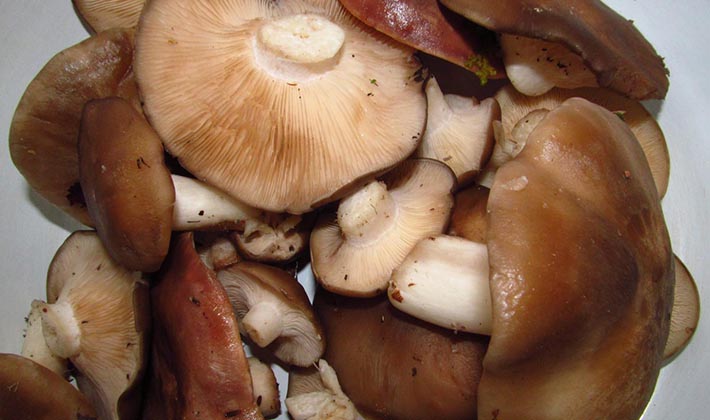 Another interesting way to peel mushrooms is through heat treatment. Do mushrooms clean the row by boiling? Yes, and I must say that it is very convenient, because you do not need to waste time, as is the case with dry cleaning. Rows cleared of strong contaminations are boiled 4-5 times for 10 minutes, and each time you need to change the water. The remaining small debris will lag behind the mushroom as it boils. In addition, during heat treatment, it is imperative to remove the formed foam from the surface. Remember that the resulting decoctions can not be used for other purposes!
Another interesting way to peel mushrooms is through heat treatment. Do mushrooms clean the row by boiling? Yes, and I must say that it is very convenient, because you do not need to waste time, as is the case with dry cleaning. Rows cleared of strong contaminations are boiled 4-5 times for 10 minutes, and each time you need to change the water. The remaining small debris will lag behind the mushroom as it boils. In addition, during heat treatment, it is imperative to remove the formed foam from the surface. Remember that the resulting decoctions can not be used for other purposes!
Do I need to clean the hats and rings in the rows?
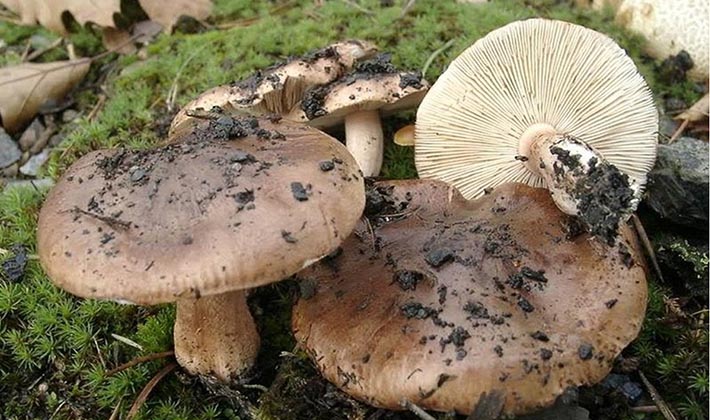 Some types of mushrooms, such as butter, need to clean their hats. And what about the ranks: is it necessary to clean the hats of these representatives? Many experienced mushroom pickers note that the peel removed from the cap reduces the bitterness that is inherent in almost all types of rows. If during the initial treatment you are not going to use soaking, then it is better to remove the film with a knife. This is painstaking work, but the result is worth it.
Some types of mushrooms, such as butter, need to clean their hats. And what about the ranks: is it necessary to clean the hats of these representatives? Many experienced mushroom pickers note that the peel removed from the cap reduces the bitterness that is inherent in almost all types of rows. If during the initial treatment you are not going to use soaking, then it is better to remove the film with a knife. This is painstaking work, but the result is worth it.
In addition, on the legs of some types of rows you can see a ring-skirt. In some representatives of the mushroom "kingdom" this feature is a sign of edibility, while in others it does not matter. But there is an opinion that such a skirt is bitter, so it must be removed. Do I need to clean such a ring in the row? No, this is not necessary at all, since there is absolutely no bitterness in it. For the hostess, such work will be a waste of time and effort.
We also offer to watch a video on how to clean row mushrooms?
How to clean gray and poplar rows (with video)
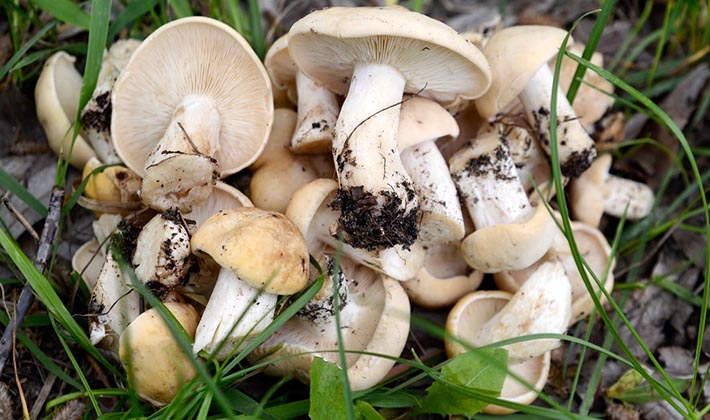 The most popular rows are most often called the gray and poplar row - how to clean these types of fruiting bodies? As already noted, the final result of the product will depend on the proper preliminary preparation of the fungus. You can use any of the listed cleaning options. However, when choosing, consider which processing process you will use in the future. So, for drying and freezing it is better to carry out dry cleaning. For salting, frying, pickling, as well as first courses, use soaking or boiling. We suggest that you familiarize yourself with the universal way showing how to clean the gray and poplar row.
The most popular rows are most often called the gray and poplar row - how to clean these types of fruiting bodies? As already noted, the final result of the product will depend on the proper preliminary preparation of the fungus. You can use any of the listed cleaning options. However, when choosing, consider which processing process you will use in the future. So, for drying and freezing it is better to carry out dry cleaning. For salting, frying, pickling, as well as first courses, use soaking or boiling. We suggest that you familiarize yourself with the universal way showing how to clean the gray and poplar row.
- Each instance is cleaned with a knife from leaves, moss, needles and other debris, and then cut off the bottom of the legs. We also remove rotten and damaged areas by insects.
- Remove the film from each hat and rinse the fruiting bodies in plenty of water.
- If there is severe contamination, then you can soak the rows for 6-8 hours in salted water.
- Then we wash the mushrooms again, and then boil for 30 minutes.
- We recline in a colander, rinse, let drain, and proceed to the planned processing processes.
As you can see, cleaning the row of poplar and gray is quite simple, if you follow the correct procedure. Thanks to these rules, even a novice housewife will cope with the preparation of a mushroom crop.
We also offer to watch a visual video, which shows how to clean poplar rows and gray.
